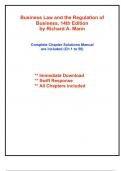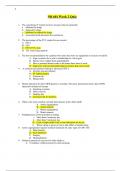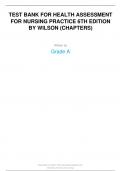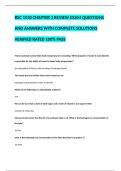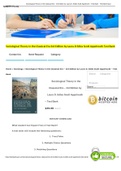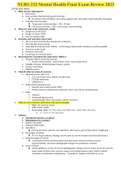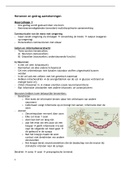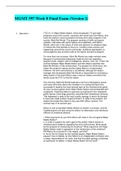Exam (elaborations)
Solutions for Business Law and the Regulation of Business, 14th Edition by Mann (All Chapters included)
- Course
- Institution
Complete Solutions Manual for Business Law and the Regulation of Business, 14th Edition by Richard A. Mann, Barry S. Roberts ; ISBN13: 9780357987650.....(Full Chapters included Chapter 1 to 50 and organized in reverse order, Ch-1 solutions not available)...1. Introduction to Law. 2. Business Ethic...
[Show more]
